Paradise With a Limp
Cityscapes as you’ve never seen them before, built from luxury watches, sapphire pools, and other media prescriptions for the perfect life.
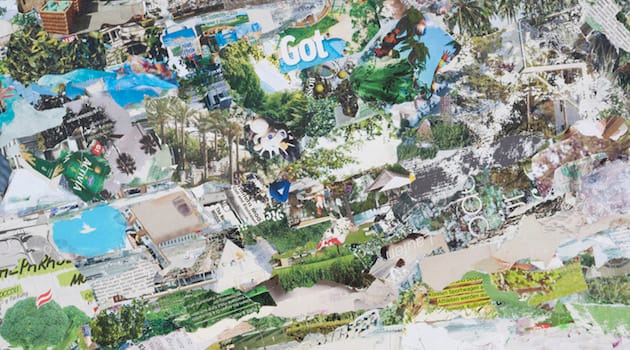
Interview by Karolle Rabarison
The Morning News: You’ve described yourself as a “media thief.” When is art not re-appropriation?
Gabi Trinkaus: To me, works dealing with social commentary are not imaginable without re-appropriation of some kind or other.
TMN: Do you buy magazines with the primary intention to use them for your collages? Or do you source material from whichever magazine you happen to buy?
GT: Both and neither. Actually, since a rather large amount of source material is needed even for a single work, I would never be able to acquire this by only buying them myself. I have several of “my girls” collect materials. Once they are ready for a clear-out, we have the magazines picked up. Continue reading ↓
“Paradise With a Limp” is on view at Claire Oliver Gallery, New York City, through June 28, 2014. All images used with permission, all rights reserved, copyright © the artist.
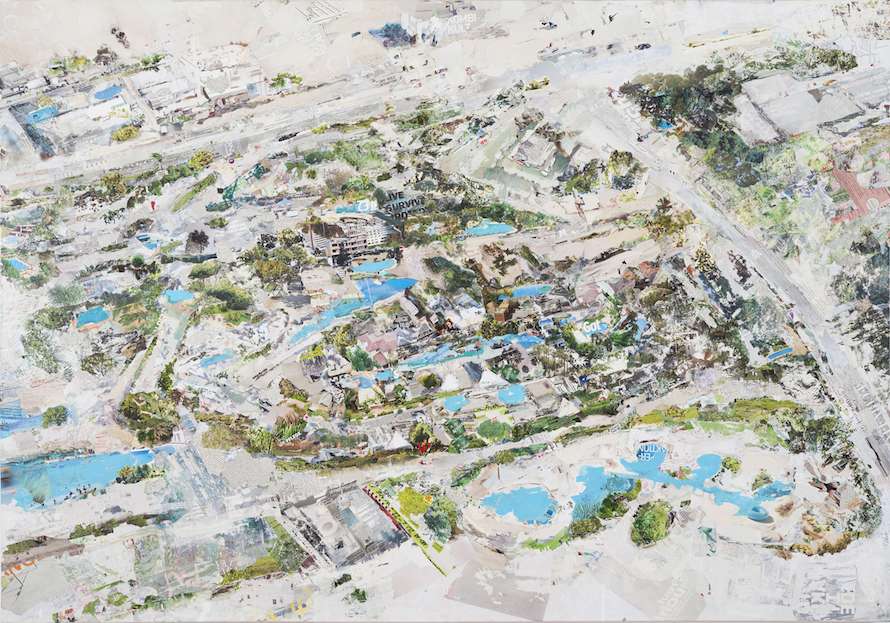
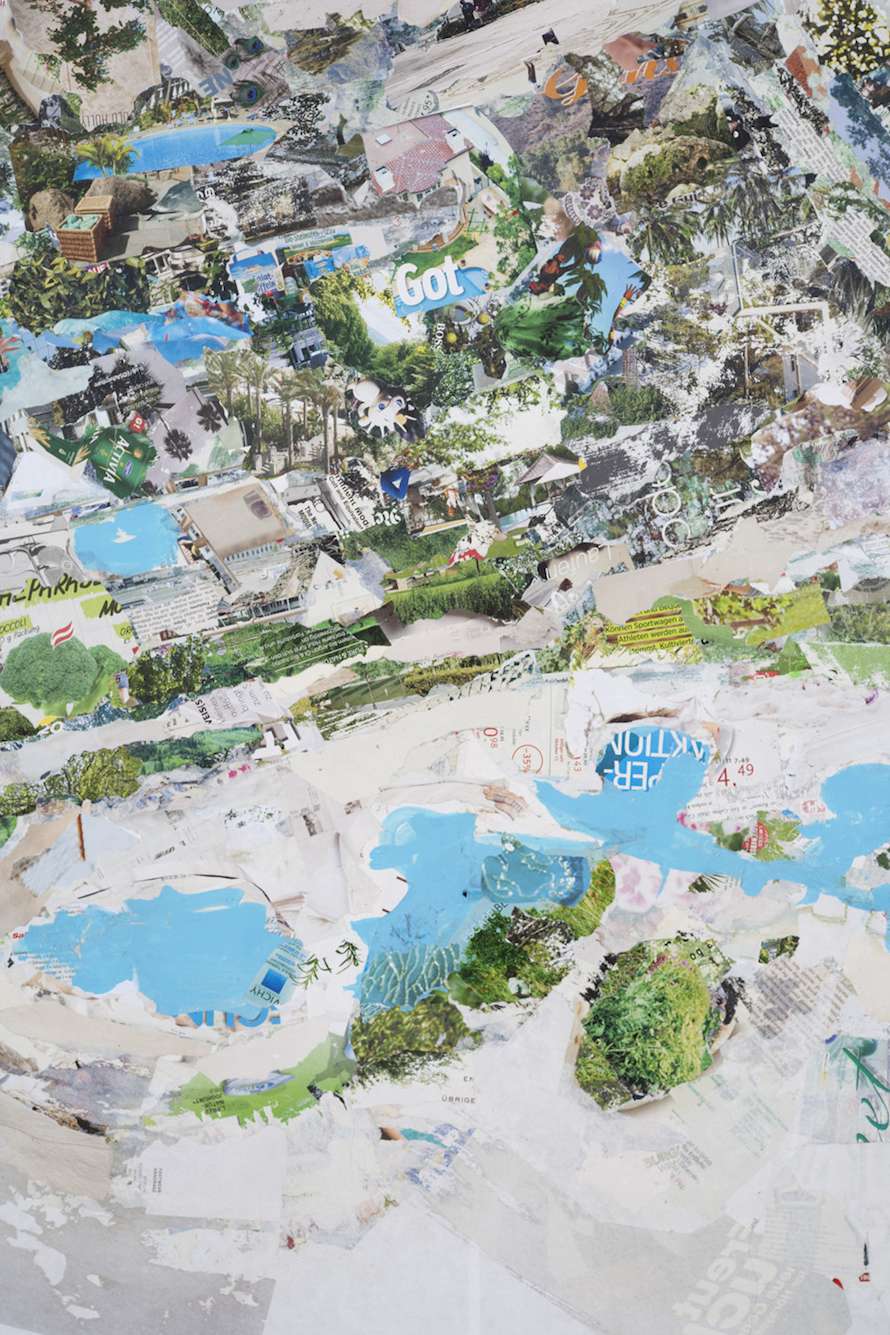
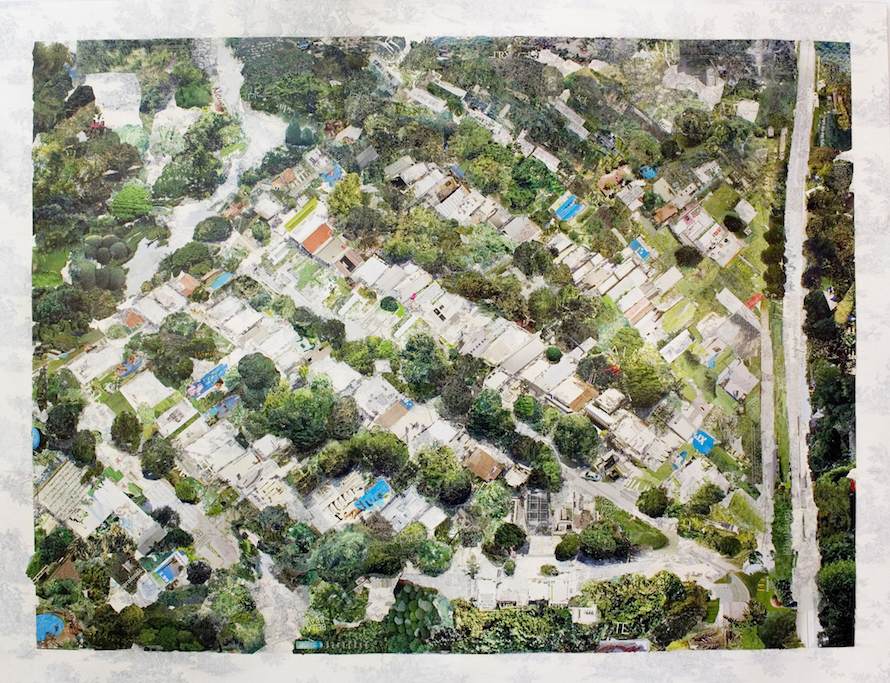
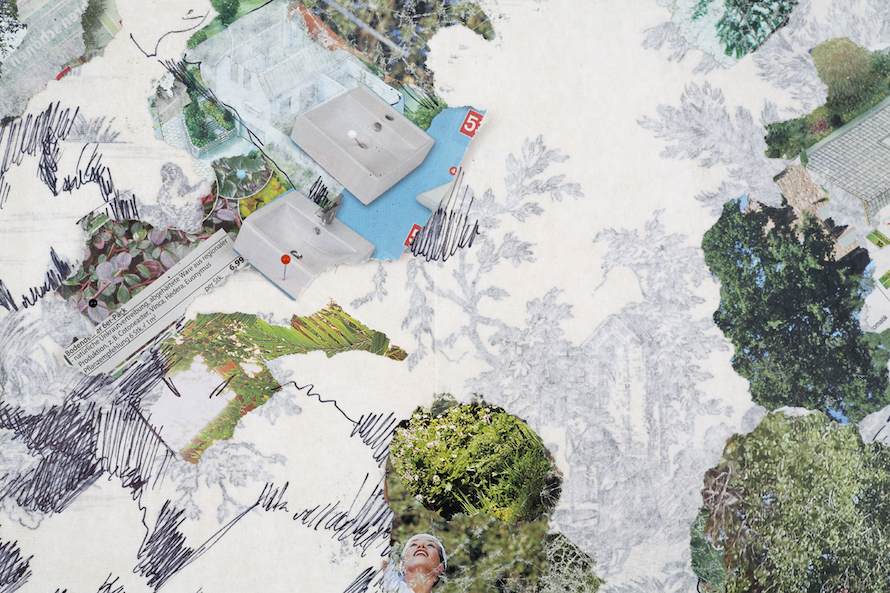
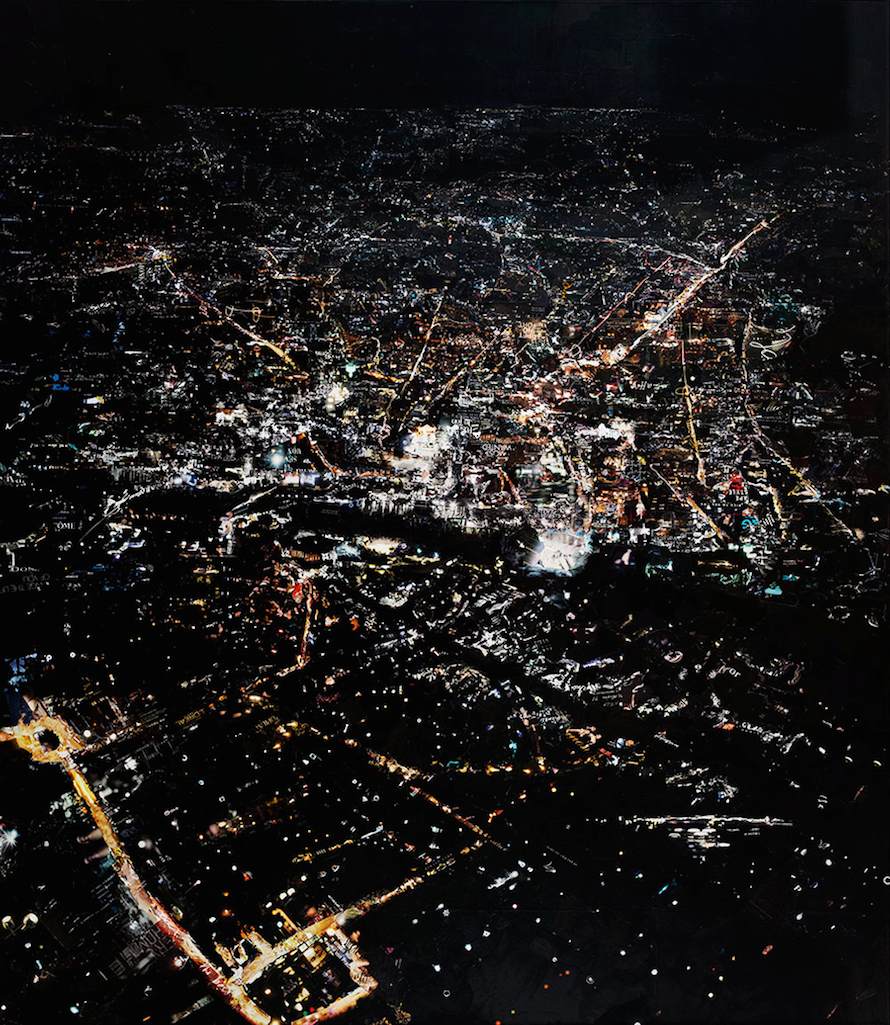
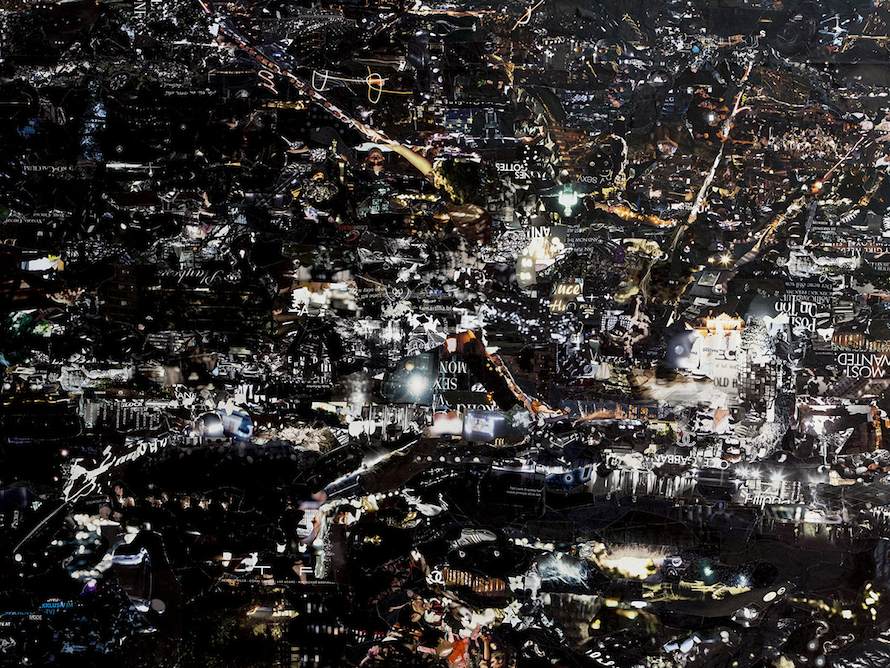
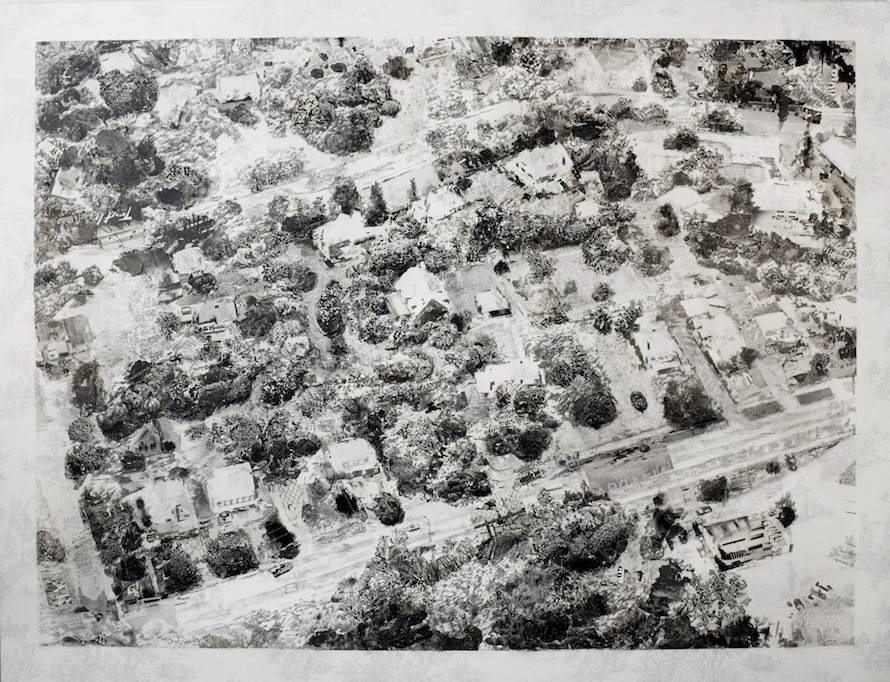
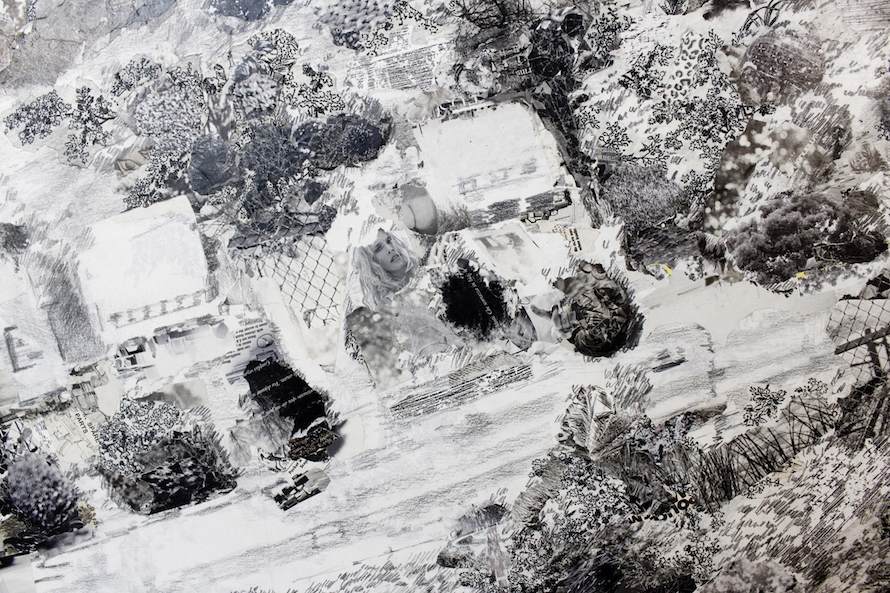
Interview continued
I also do buy favorite magazines for myself and later use them after I am finished with them. This is the way it started originally. In some cases, when looking for something special I need for a particular work, I will also sneak through the pages and buy whatever magazine works best to continue or finish.
TMN: Your pieces previously focused on human portraits. How has your process changed as they’ve shifted to city landscapes?
GT: Honestly, it hasn’t really changed. I might have introduced more visible over-drawing in some of the recent black-and-white landscapes, which I never do in the portraits, where the drawing is only underdrawing. And yes, with the landscapes I broadened the range of my source material. Flyers changed their commonly annoying character to being a welcome gift found on the doorknob every morning.
To understand how these seemingly different topics are connected, one has to realize that I am working on media images or—more correctly put—”media reality,” meaning that media, especially advertising, induces an image of something like a perfect world. I understand media as a wish-creating industry.
Looking at my work through this, let’s say, particular magnifying glass, the thought behind the different subject matter is pretty much the same. Whether a portrait carries all this “fashion advice” found in beauty ads, or the nightscape contains swatches of luxury goods, brands, party weapons, and occasionally a bit of porn—it is about how all things in life are made into carrying commodity character.
In this way everything seems pre-produced already: the media telling us what to want, what to aspire to, what to own, what we should have in order to create a successful, satisfying life. And to me this seems like a very flaky concept.
TMN: And what makes a perfect swatch?
GT: First the fact that it fits where I need a match. And certainly also the message that might whisper an especially flaky piece of beauty advice or “must-have” lifestyle. Or promise of some kind of paradise or eternity. I am always especially happy for these text-finds which serve as a tool for instant-irony.
TMN: What are you doing tomorrow?
GT: Literally? Sleeping in and packing my suitcase for my trip to New York for the opening of my show at Claire Oliver Gallery. Or concerning my work? Well, since I always step from one topic to another to keep my interest fresh, I suppose I will do some portraits and “body portraits” again. I did start with male portraits a while ago and am looking forward to continuing that series.
